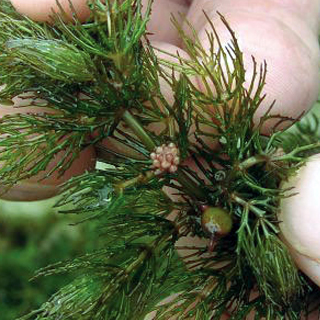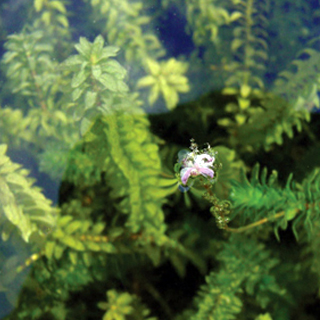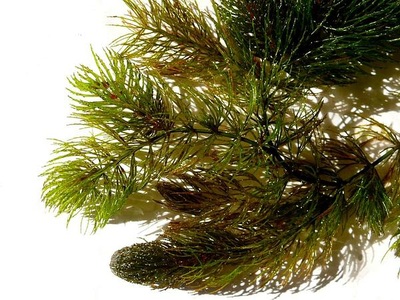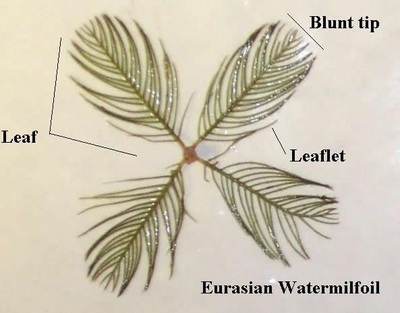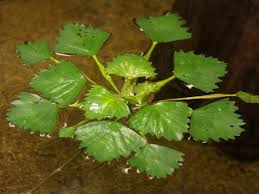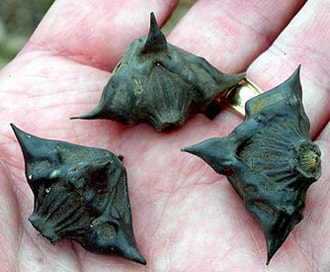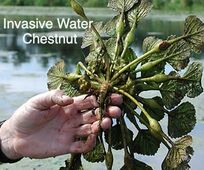"Macrophites in Hand" Photo Credit: Liz Provo
Invasive Species Control
Nashawannuck Pond is home to a variety of plant life (macrophytes) that are vital to the pond's health. The pond committee is actively engaged in identifying invasive species, researching available control methods and ongoing grant writing, fundraising events, and civic donations. Without stewardship and financial support, our pond is destined to become a smelly swamp.
Native species
Dominant macrophytes (plants) in Nashawannuck Pond include:
Elodea Canadensis - native to our area; Dark green, whorls of three; provide good habitat for micro and macro-invertebrates; native but too prolific.
Coontail (Ceratophyllum demersum) - native to our area; resembles a raccoon tail; submerged and free floating; leaves arranged in a whorl around stem; provide good habitat for micro and macroinvertebrates; native but too prolific.
Non-Native (invasive) species
Eurasian Watermilfoil – (Myriophyllum spicatum) – Non-native, invasive (native to Europe, Asia, and parts of Africa. Description - Whorls of four feather like leaves; Leaflets finely paired, usually 12-21pairs; Flower spike rises above the surface, small and reddish; Rooted, usually in waters 3-15 feet in depth; Reproduction by seed or fragments; Spread by boats, trailers, bail buckets, fishing poles, humans, wildlife etc. Effects: Form dense canopy that shades out and out competes native vegetation; Impedes swimming, boating, fishing; Bad habitat for fish and reproduction; Results in smaller fish size and population; Bad habitat for macroinvertebrates which are food for fish; Creates oxygen deficient water; Control is possible by pulling milfoil plants by hand for small areas. Don’t create and leave behind small fragments!
Herbicide treatment for invasive Eurasian Milfoil and dense macrophytes was completed on 7/13/2023.
The pond is monitored every year and previous treatments were completed in 2016, 2017, 2019, 2021, 2022.
Invasive Water Chestnuts - Water chestnut is an aquatic invasive plant that is native to Eurasia and Africa. It was introduced in the United States in the mid-1800' as an ornamental plant. Around 1884, water chestnut was found growing in Collins Lake near Scotia, NY. Water chestnut colonizes shallow areas of freshwater lakes and ponds and slow-moving streams and rivers and negatively impacts aquatic ecosystems and water recreation.
Native species
Dominant macrophytes (plants) in Nashawannuck Pond include:
Elodea Canadensis - native to our area; Dark green, whorls of three; provide good habitat for micro and macro-invertebrates; native but too prolific.
Coontail (Ceratophyllum demersum) - native to our area; resembles a raccoon tail; submerged and free floating; leaves arranged in a whorl around stem; provide good habitat for micro and macroinvertebrates; native but too prolific.
Non-Native (invasive) species
Eurasian Watermilfoil – (Myriophyllum spicatum) – Non-native, invasive (native to Europe, Asia, and parts of Africa. Description - Whorls of four feather like leaves; Leaflets finely paired, usually 12-21pairs; Flower spike rises above the surface, small and reddish; Rooted, usually in waters 3-15 feet in depth; Reproduction by seed or fragments; Spread by boats, trailers, bail buckets, fishing poles, humans, wildlife etc. Effects: Form dense canopy that shades out and out competes native vegetation; Impedes swimming, boating, fishing; Bad habitat for fish and reproduction; Results in smaller fish size and population; Bad habitat for macroinvertebrates which are food for fish; Creates oxygen deficient water; Control is possible by pulling milfoil plants by hand for small areas. Don’t create and leave behind small fragments!
Herbicide treatment for invasive Eurasian Milfoil and dense macrophytes was completed on 7/13/2023.
The pond is monitored every year and previous treatments were completed in 2016, 2017, 2019, 2021, 2022.
Invasive Water Chestnuts - Water chestnut is an aquatic invasive plant that is native to Eurasia and Africa. It was introduced in the United States in the mid-1800' as an ornamental plant. Around 1884, water chestnut was found growing in Collins Lake near Scotia, NY. Water chestnut colonizes shallow areas of freshwater lakes and ponds and slow-moving streams and rivers and negatively impacts aquatic ecosystems and water recreation.
Efforts are underway to fund an invasive species control project. Your generous donation will help Nashawannuck Pond remain vital for future generations.
| herbicide_application_overview.pdf | |
| File Size: | 74 kb |
| File Type: | |

